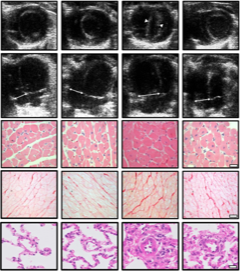Pulmonary hypertension and right ventricular function

Although for decades the right ventricle (RV) and pulmonary circulation were forgotten they increasingly concern the cardiovascular practitioner and researcher communities due to recognition of: (1) high lethality of severe and rare forms of arterial pulmonary hypertension (PH) such as pulmonary arterial hypertension (PAH), (2) high prevalence of PH complicating major cardiovascular and respiratory conditions, (3) strong prognostic relevance, and (4) fundamental role in congenital heart disease. Moreover, PH and RV failure are highly lethal and frequent complications of cardiac surgery and intensive care. Despite new drug developments for PAH, the prognosis remains poor and numerous patients require lung or combined heart-lung transplant or eventually have a lethal outcome. As for other forms of PH they remain weakly investigated and there are currently no PH or RV-directed therapies. All these issues underlie the purpose for UnIC past, present and future investment in the study of new diagnostic tools, as well as, in new therapeutic approaches to PH and RV failure as a major goal.
Main objectives of this research topic are:- To study new potential physiological modulators in the course of chronic experimental PH and to evaluate their effects in RV function.
- To establish new animal models of PH and to characterize RV function in these experimental models.
- To assess the role of new RV directed drugs or experimental therapeutic approaches in the acute and chronic therapy of PH and RV afterload.
- To assess the role of exercise in chronic experimental PH and RV afterload.
- To establish new strategies for RV anatomy and function evaluation.
- To identify biomarkers that can assist in PH patient risk stratification.
Collaborations
National collaborations- Instituto de Ciências Biomédicas Abel Salazar (Ana Patrícia Fontes de Sousa)
- Faculdade de Medicina, Universidade de Coimbra (Rui Baptista, Graça Castro, Henrique Girão)
- University of Antwerp, Laboratory of Physiopharmacology, Belgium (Gilles de Keulenaer)
- University of Graz, Department of Pharmacology and Toxicology, Austria (Friedrich Brunner)
- Medical University of Graz, Division of Cardiology, Austria (Simon Sedej, Mahmoud Abdellatif)
- University of Otago-Christchurch, Christchuch Heart Institute, Department of Medicine, Christchurch, New Zealand (Miriam Rademaker)
- Laval University, Pulmonary Hypertension Research Group, Institut Universitaire de Cardiologie et de Pneumologie de Québec, Quebec City, Canada (Sebastién Bonnet e Steeve Provencher)
- Université PARIS SUD - LabEx LERMIT, Inserm UMR-S 999, France (Frédéric Perros)
- Université Catholique de Louvain, Faculté de Médecine et Médecine Dentaire (Diana Santos Ribeiro e Laurent Godinas)
- UCD Conway Institute for Biomolecular & Biomedical Research, University College Dublin, Belfield, Ireland (Therese Kinsella, Eamon P. Mulvaney, Helen Reid)
- Univeristy of Leuven, Department of Clinical and Experimental Medicine, Belgium (Marion Delcroix, Rozenn Quarck)